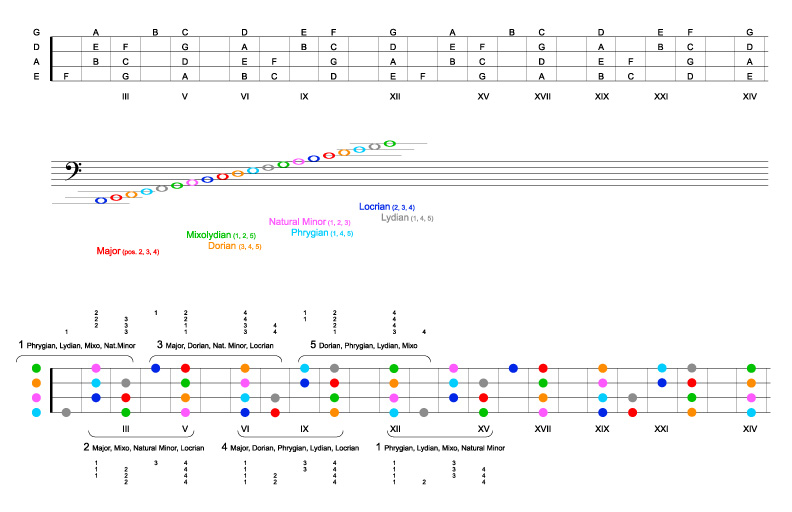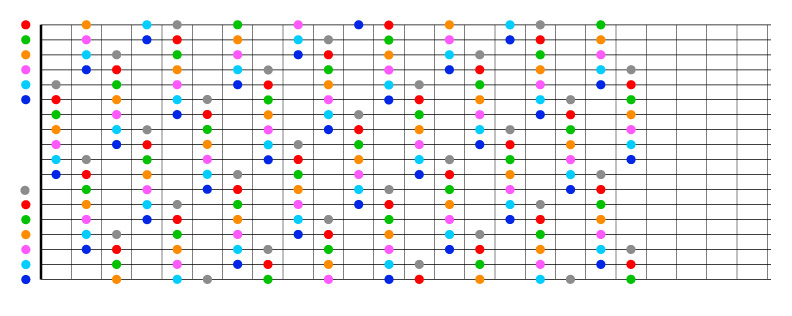I've been thinking about posting this for a long time, usually deciding that most everyone here knows more than I do anyway... but then I see something like effclef's recent story about his niece having her first lesson, and the whole concept of learning is quite fascinating to me, so here you go. A while back (more than a year now) there were some comments in another thread about how some people prefer to think in terms of visual images rather than words. While I clearly have a tendency to be long-winded, I really do like non-verbal thinking, and find this to be especially true when it comes to playing music. Don't get me wrong - I think music theory is very important. I've got quite a collection of books, and have spent a lot of time studying over the years. But I think it's still fair to say that learning scale patterns - and the quickest possible way to get from notes you hear in your head to fingering positions, almost as a reflex with as little intellectual activity as possible - is an essential skill. At the same time, when I hear someone tell me, "learn to play a major seventh arpeggio, all up and down the neck, and then learn it in all twelve keys"... well, I just want to go put on a CD or something instead (sorry Dino, nothing personal). I just happen to be lousy at memorizing stuff, though I'm pretty good with patterns and concepts. So about ten years ago, when I was switching from guitar to bass, I put together this little cheat sheet for myself.

(Credit where due: the positions, fingering patterns, and accessible scale modes in each position, are taken from "The Improvisor's Bass Method", by Chuck Sher, though I believe this is all pretty standard stuff. The colors are just those which happened to feel right to me, somewhat limited by the felt tip markers I was able to find, and are not based upon any existing scheme that I know of.) This should all be pretty self explanatory. But for me, what really helped was extending the pattern across many more strings (this one has a low B and high C).

We all know that with equal tuning the pattern has to repeat, though it's pretty hard to visualize with only four strings. But once I see the whole thing, I can tell myself that by learning just one single pattern, I already know how to play eight of the most popular (Western) scales in all twelve keys. Plus, at least in theory, it shouldn't be very difficult to move from a 4 string to a 5 (which turned out to be true). If you happen to find these interesting enough to look at further, I suggest you download and print the pdf versions below - they look lousy on screen, but print much better than the jpegs above. (Hmm, can't seem to use the "attach{file}" tag? Or maybe I need to use that "Upload Attachment..." button, but I thought I did this before. If anyone cares, I can try again or just email them) Just a slightly different way of looking at things; maybe some of you will find it useful. -Bob